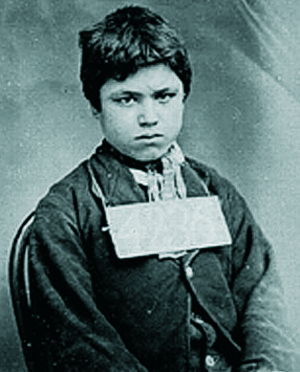During the 19th Century, people began debating about children, childhood and the environment children grow up in. Up until this point, the idea of a ‘childhood’ was unheard of. It was only developed as a social concept in the mid-19th Century and was viewed in a “positive light, as a state of freedom and innocence.” (Reynolds, 2017)
The social concept of childhood can be explored in the text ‘Moll Flanders’ by Daniel Defoe. In this, Moll was born in a prison, led a crime-filled and adulterous life and then ended up back in prison. So was she born an bigamistic thief or did she learn these traits from growing up too quickly and having to forgo her childhood?

In the 19th Century, thousands of babies were born in run-down, dirty jail and prison cells. Many died shortly after their birth due to the horrific conditions in which they were born. The few that didn’t were put in an orphanage and some were adopted. An incredibly small amount found themselves back in jail as children. (Beaken, 2017)
According to the 1851 census only 20 children under the age of 10 were in British prisons and only one in London. Between the ages of 10 and 15 the number rises to 875 (299 in London) – Jubilee Campaign, 2017
Although Moll begins her life in a jail, her childhood and first 40 years of her life, are spent living carefree and doing as she pleases – leaving children behind as she finds a richer husband to marry. I believe that Moll’s actions are predominantly learnt rather than traits she was born with. As readers we do not know a lot about her mother but is can be assumed that she is perhaps a prostitute or something similar as Moll is not adopted by her biological father or any family member. She is alone. This idea of being alone and fending for yourself was most likely instilled on Moll when she was with her birth mother in jail. The way she goes about fending for herself however, marry rich men and have a number of children with them, could possibly be an instinct that she was born with.
In my opinion I believe that children who were born in jails and prisons were not born “bad” but learnt their behaviours and ideas in their early development with their mothers and from the environment they were born in. Ideas that are instilled at a young age, such as manners, stay with children throughout their lives if no adult tells them different. I don’t think that anyone in that time was fully committed to teaching children right and wrong and that they would rather punish them for their actions than allow them to develop and change.
References
Beaken, P. (2017). Crime and Punishment | Women and Children | Prisons and transportation | Educational Programmes and Tours | Visitors’ Info | The Old Police Cells Museum. [online] Oldpolicecellsmuseum.org.uk. Available at: http://www.oldpolicecellsmuseum.org.uk/page_id__538_path__0p75p312p316p.aspx [Accessed 30 Nov. 2017].
Defoe, D. (1722). The fortunes and misfortunes of the famous Moll Flanders. 1st ed. London: William Rufus Chetwood.
Oldpolicecellsmuseum.org.uk. (2017). Crime and Punishment | Women and Children | Prisons and transportation | Educational Programmes and Tours | Visitors’ Info | The Old Police Cells Museum. [online] Available at: http://www.oldpolicecellsmuseum.org.uk/page_id__538_path__0p75p312p316p.aspx [Accessed 3 Nov. 2017].
Reynolds, K. (2017). Perceptions of childhood. [online] The British Library. Available at: https://www.bl.uk/romantics-and-victorians/articles/perceptions-of-childhood [Accessed 30 Nov. 2017].
Jubilee Campaign (2017). Photograph of Thomas Miller. [image] Available at: http://www.jubileecampaign.co.uk/archive/child-prisoners-in-victorian-times-and-the-heroes-of-change [Accessed 30 Nov. 2017].
